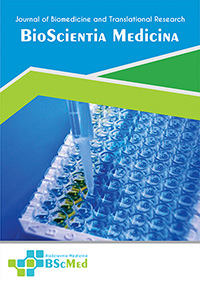Main Article Content
Abstract
Background: Papillary thyroid carcinoma (PTC) is generally indolent, yet specific histological subtypes defined by the World Health Organization (WHO) are linked to aggressive behavior and poor prognosis. The loss of the cell-adhesion protein E-cadherin is a hallmark of the epithelial-to-mesenchymal transition (EMT), a process implicated in tumor aggression. However, its role in stratifying PTC subtypes versus its correlation with tumor stage remains a significant controversy in the literature. This study aimed to disentangle these two parameters by clarifying the relationship between E-cadherin expression and both histological phenotype and tumor stage.
Methods: This was an observational, cross-sectional pilot study on 40 randomly selected, formalin-fixed, paraffin-embedded (FFPE) PTC cases from a 2024 cohort (N=74) at a tertiary hospital in Indonesia. All cases were re-evaluated and classified according to the WHO 5th Edition (2022) criteria as non-aggressive (n=34) or aggressive (n=6). E-cadherin expression was assessed by immunohistochemistry (IHC) using a standardized semi-quantitative scoring system (product of intensity and proportion) adapted from previous studies, with inter-rater reliability assessed (Cohen’s Kappa = 0.88). Scores were dichotomized as 'High' (n=25) or 'Low' (n=15). The association between E-cadherin expression and both histological subtype and AJCC 8th Edition tumor stage (Early: I/II [n=32] vs. Advanced: III/IV [n=8]) was analyzed using Fisher's Exact Test, with Odds Ratios (OR) and 95% Confidence Intervals (CI) calculated.
Results: High E-cadherin expression was observed in 62.5% of cases. A statistically significant and strong association was found between E-cadherin expression and histological subtype (p=0.021; OR 12.0; 95% CI 1.2–118.9). Low E-cadherin expression was present in 83.3% (5 of 6) of aggressive-subtype tumors, versus only 29.4% (10 of 34) of non-aggressive subtypes. In contrast, no significant correlation was found between E-cadherin expression and advanced tumor stage (p=0.126; OR 3.67; 95% CI 0.7–18.6).
Conclusion: Loss of E-cadherin expression is a significant biomarker associated with high-risk, aggressive histological phenotypes in PTC. Its lack of correlation with tumor stage, confirmed by an uncertain OR, suggests E-cadherin's role is indicative of an inherent tumor biological phenotype (aggressiveness) rather than a linear marker of tumor progression (stage). This dichotomy, likely reflecting EMT/MET plasticity, positions E-cadherin IHC as a powerful ancillary tool for pathological risk stratification.
Keywords
Article Details
As our aim is to disseminate original research article, hence the publishing right is a necessary one. The publishing right is needed in order to reach the agreement between the author and publisher. As the journal is fully open access, the authors will sign an exclusive license agreement.
The authors have the right to:
- Share their article in the same ways permitted to third parties under the relevant user license.
- Retain copyright, patent, trademark and other intellectual property rights including research data.
- Proper attribution and credit for the published work.
For the open access article, the publisher is granted to the following right.
- The non-exclusive right to publish the article and grant right to others.
- For the published article, the publisher applied for the Creative Commons Attribution-NonCommercial-ShareAlike 4.0 International License.





